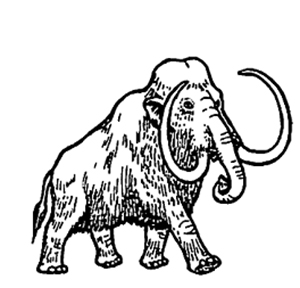Visitors to the Calusa Heritage Trail often notice that the Calusa seem quite different from other Indian people in the United States who they have learned about. A natural question, then, is “Where did the Calusa come from?” It is a more complicated question than it might first appear.
The Pineland Site was occupied by the first century A.D., about 2,000 years ago. These people may have been the direct ancestors of the historically known Calusa, but we are not entirely convinced. By 500 years later, about A.D. 500, we are more certain that the people at Pineland were ancestors of the Calusa because of similarities in artifacts, such as their shell tools and pottery.
Some visitors wonder if the Calusa migrated to Florida from the Caribbean, Mexico, or South America. There is no archaeological evidence whatsoever that supports the notion that the Calusa came into Florida from those places.

Some visitors know that there were Indian people in Florida by 14,500 years ago, a time when there were still mastodons and saber-toothed cats here. Evidence of these Floridians comes from sites that are primarily underwater today, either off the coast or in freshwater bogs, springs, and rivers. Again, a natural question is, “Where did those people come from?”
As recently as 30 years ago, archaeologists believed that people had first come from Asia into North America across a land bridge that connected present-day Alaska and Siberia. As glaciers melted at the end of the Ice Age, an ice-free corridor allowed passage into the Great Plains about 14,000 to 13,000 years ago. There were no known artifacts dating earlier. However, many archaeologists reasoned that some people may have migrated down the Pacific coast. These would have been fishing people who traveled in boats, subsisting on fish, sea mammals, and plant foods. Unfortunately, back then there was no undisputed evidence for the Pacific coastal migration theory.
Today, there are enough carefully excavated sites and well regarded DNA studies to show that the Pacific coastal corridor was a viable route for people into the Americas as early as 17,000 years ago, certainly by 16,000 years ago. On the other hand, the inland land bridge was not easily passable until 14,000 to 13,000 years ago.
A new publication by anthropologist Michael Waters reviews recent dates from archaeological sites across North and South America and summarizes genetic traits to establish dates of movement and origins of the earliest North Americans. The evidence shows that people lived successfully in many places in North America by 15,500 years ago and that people lived in South America by 14,200 years ago. Waters details the genetic traits compiled and then writes, “Genetic studies conclusively show that the first Americans did not originate from Europe.” The data “clearly show that eastern Asia was the homeland of the first Americans.”
We have no genetic information for Calusa people to contribute to these data sets. This makes it impossible to link them to specific places and timelines of human movements. We still think that before 17,000 years ago, there were no humans in North and South America. So, the best answer we can give to “Where did the Calusa come from?” is, we are not sure, Florida has been populated much longer than people realize. As a whole, the Calusa people living at Pineland, Mound Key and other towns across Southwest Florida when Europeans arrived in the 1500s had benefitted from ancestral knowledge of a unique environment. No doubt that knowledge was critical to sustaining their ways of life so well and for such a very long time.
To learn more, see Late Pleistocene Exploration and Settlement of the Americas by Modern Humans, by Michael R. Waters. Science365 (6449), 12 July 2019. DOI: 10.1126/science.aat5447 A copy is available in the RRC library at the Ruby Gill House.